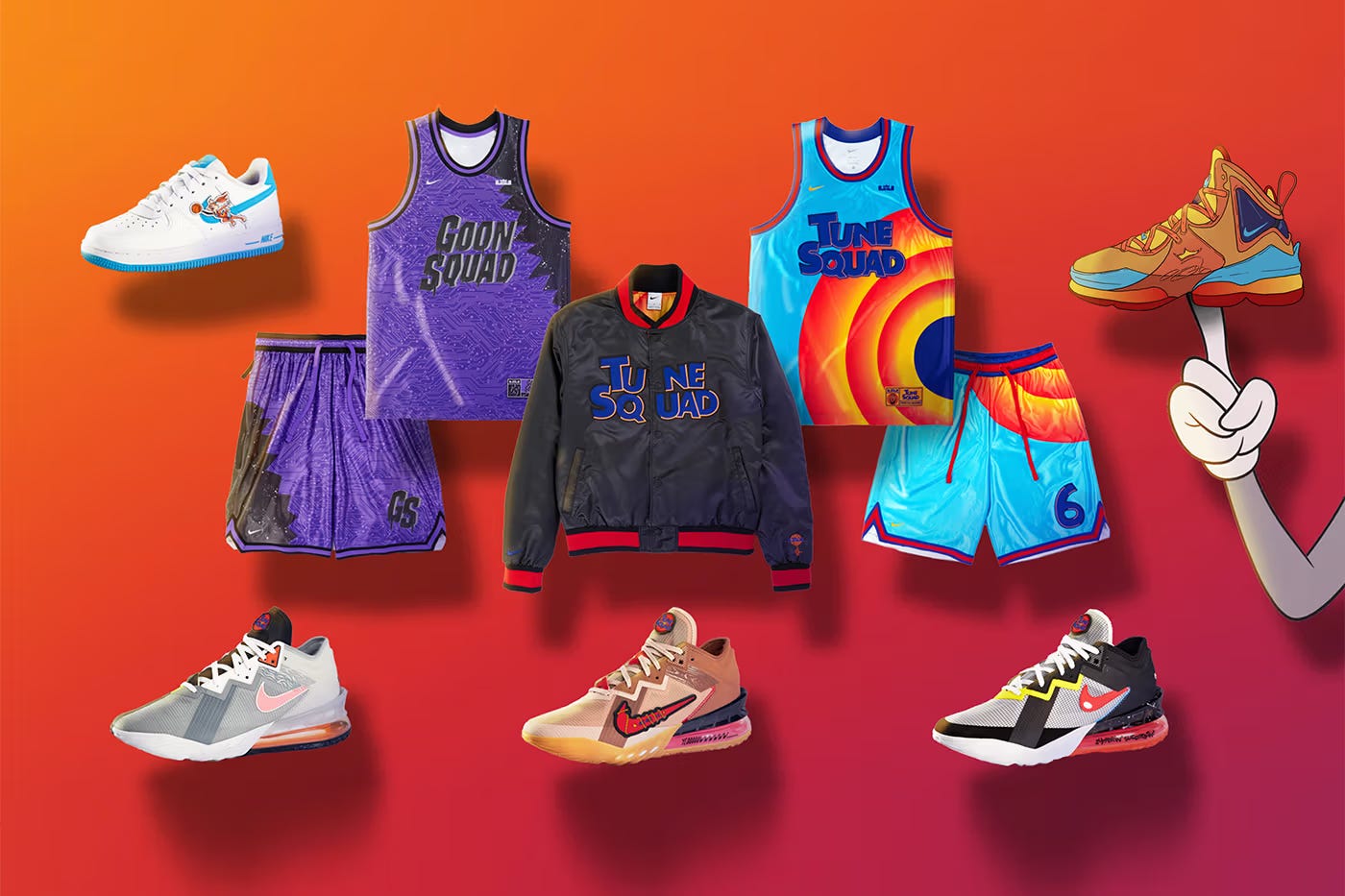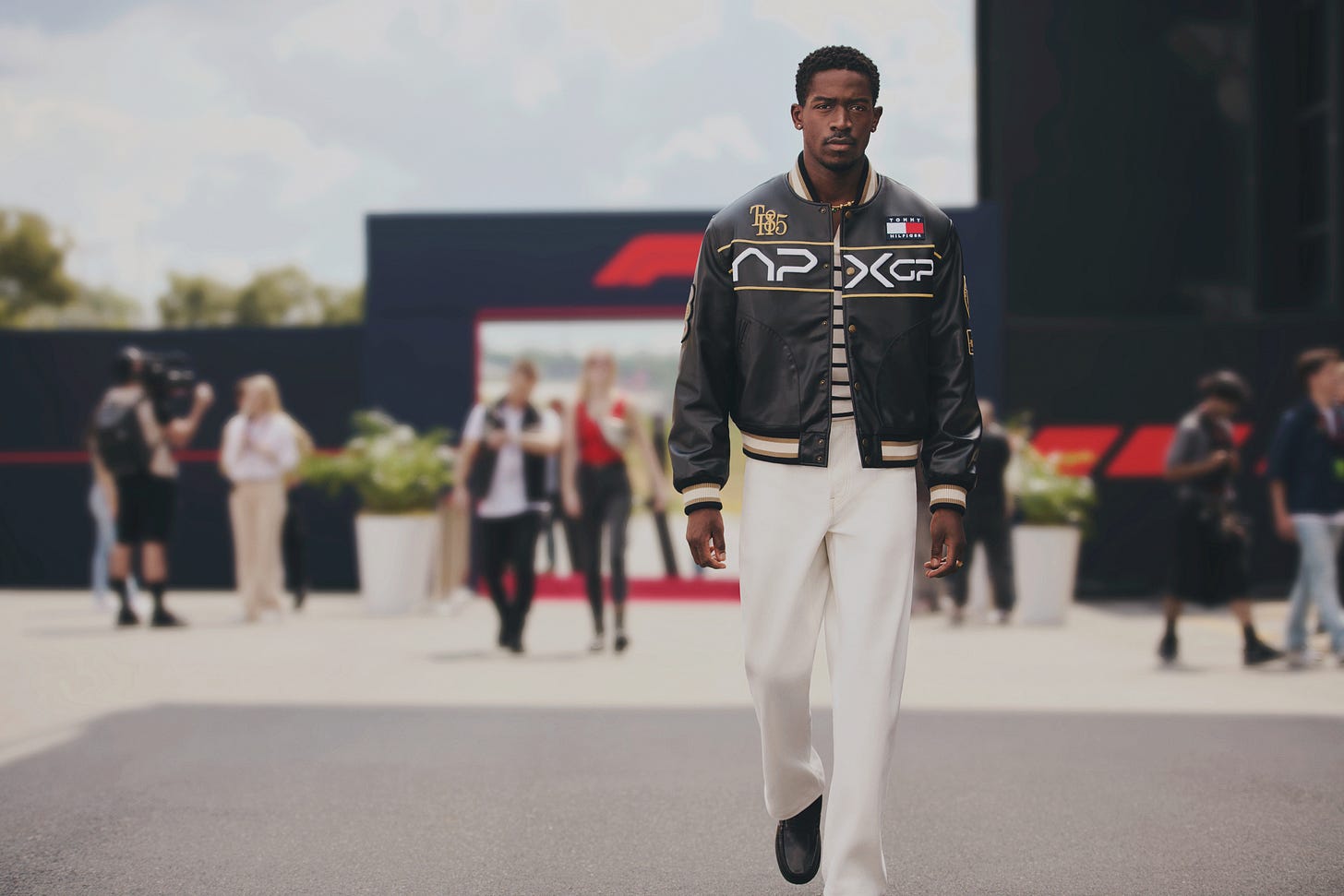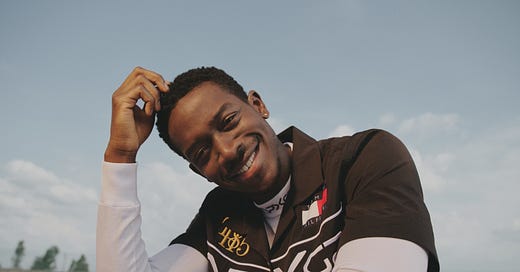Tommy Hilfiger Is A Motorsport Genius
Is the APXGP collection art serving commerce, or commerce elevated to art?
In an era where fashion houses are constantly seeking new territories to conquer, Tommy Hilfiger has pulled off what might be the most audacious marketing coup of the decade. The Hilfiger brand is the official fashion sponsor of the film's fictional APXGP Team, led by drivers Joshua Pearce, played by Damson Idris, and Sonny Hayes, played by Brad Pitt. But this isn't mere product placement—it's the birth of a parallel universe where fashion and fiction collide at 200 miles per hour.
The genius lies not in the sponsorship itself, but in the complete commitment to the illusion. Tommy Hilfiger has essentially brought a nonexistent Formula One team to life, creating what may be the most desirable merchandise line in motorsport for a team that exists only on screen. This bold strategy echoes other successful ventures into fictional branding, such as Nike's partnership with Ted Lasso's fictional Richmond FC and the brand's iconic collaboration with Michael Jordan's Tune Squad in Space Jam. However, where those partnerships felt like clever marketing extensions, Tommy Hilfiger's APXGP venture appears to be a complete brand immersion.

The timing couldn't be more perfect. Damson Idris had one of the most memorable entrances at the 2025 Met Gala. The British actor arrived in a full APXGP racing suit straight from the upcoming F1 movie, as well as an embellished racing helmet consisting of 20,000 Swarovski crystals. But before we knew what was happening, the racing suit was torn off to reveal a custom Tommy Hilfiger suit underneath. This theatrical transformation at fashion's most hallowed event perfectly encapsulates the brand's strategy—the line between fiction and reality becomes beautifully, deliberately blurred.

For Tommy Hilfiger, this partnership represents more than marketing—it's a homecoming. "Since I was a kid peeking through the fences at Watkins Glen racetrack, Formula 1™ has been legendary to me," he says in an official statement. Luckily, growing up in Elmira, a small town in upstate New York, the future American fashion purveyor was situated only 30 minutes away from Watkins Glen Grand Prix Race Course. This childhood fascination has driven a decades-long relationship with motorsport. In 1991, Tommy Hilfiger sponsored Mika Hakkinen and Alex Zanardi's Lotus with customised racing suits that mixed the fashion brand's representative colours with those of the racing team, marking the beginning of a love affair that has now come full circle.
The APXGP collection represents something unprecedented in fashion-meets-motorsport collaborations. While real F1 teams often struggle with merchandise that feels authentically connected to the sport's glamour, Tommy Hilfiger has created a fictional team whose aesthetic arguably surpasses most legitimate racing operations. What sponsors does the fictional team have? IWC Watches, Expensify, Tommy Hilfiger, Mercedes AMG, MSC Cruisers, Geico Insurance, EA Sports, Pirelli, OMP race suits, and even the FIA has its logo on the front wing—a roster of partnerships that would make any real team envious.
This blurring of cinematic and commercial boundaries raises fascinating questions about the future of brand storytelling. The F1 film, with its aggressive marketing campaign and deep brand integration, sometimes feels less like a narrative experience and more like the most expensive fashion campaign ever produced. Is this art serving commerce, or commerce elevated to art?
The risk, of course, is considerable. Aligning so completely with a single film requires unwavering confidence in its success. Should the movie fail to capture audiences, Tommy Hilfiger faces the possibility of being remembered for one of fashion's most expensive miscalculations. Yet the brand's established credibility and its authentic motorsport heritage provide a safety net that newer fashion houses might lack.
More intriguingly, this partnership signals a potential future where fashion houses don't just dress fictional characters—they become fictional characters themselves. The crossover possibilities are vast, particularly as entertainment properties increasingly target diverse audiences. An F1 film doesn't just appeal to motorsport enthusiasts; it draws action movie fans, fashion followers, and anyone captivated by the glamour of high-speed competition.

Tommy Hilfiger's APXGP venture may well represent the evolution of fashion marketing, where brands don't just sell products, but entire mythologies. In an attention economy where authenticity often feels manufactured, perhaps the most honest approach is to embrace the fiction entirely. After all, fashion has always been about aspiration, about selling dreams as much as garments. Tommy Hilfiger has taken this concept to its logical extreme, creating a dream so vivid that 20,000 Swarovski crystals couldn't make it shine any brighter.
Whether this represents the future of fashion marketing or a brilliant one-off experiment, Tommy Hilfiger has undoubtedly made the grid. Now, we wait to see if they can take the checkered flag.





